
by LBEMC Admin
Share:
ARTICLE: Toxic Plants and Your Horse
Being the grazing, foraging animals that horses are, it is no wonder that horse owners get worried about toxic plants. Plant intoxication is a very real concern if your horse spends time out on pasture. In fact, it can be a risk even if your horse is always kept indoors because toxic plants can sometimes accidentally make their way into the hay you buy.
There are a handful of toxic plants to be aware of in California and they all vary in their level of toxicity; ie some plants are life threatening after only a few leaves are ingested, whereas others become toxic only after being eaten in large quantities over a longer period of time. Becoming aware of these toxic plants and to being able to recognize them in your pasture or hay can greatly reduce the chance that your horse will suffer from toxic ingestion.
Here is a list of some common toxic California plants that your horse may encounter:
Common Groundsel (Senecio vulgaris)
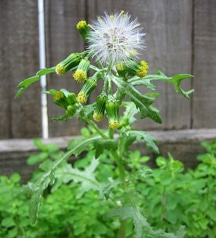
-
Body system affected: Liver, Skin.
-
Signs of toxicity: Due to pyrrolizidine alkaloids (PA) present in the plant. Weight loss, poor appetite, jaundice, behavioral changes, incoordination, head pressing, dermatitis, skin sloughing over white-haired regions.
-
Toxic dose: 1-4% body weight (10-40 pounds per 1000 pound horse) over several weeks to months. Higher doses can cause acute liver failure. Horses usually avoid PA containing plants unless no other food is available.
-
Toxic components: Entire plant, fresh or dried, especially flowers.
Tansy Ragwort (Senecio jacobea)
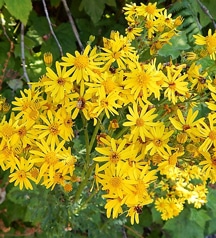
-
Body system affected: Liver, Skin.
-
Signs of toxicity: Another PA containing plant. Same signs as above.
-
Toxic dose: Similar to Common Groundsel. 4-8% body weight (40-80 pounds per 1000 pound horse) over several days can be lethal.
-
Toxic components: Similar to above.
Fiddleneck (Amsinckia intermedia)
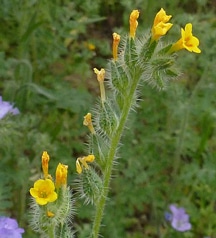
-
Body system affected: Liver, Skin.
-
Signs of toxicity: Another PA containing plant. Same signs as above.
-
Toxic dose: Similar to above.
-
Toxic components: Similar to above.
St. John’s Wort (Hypericum perforatum)
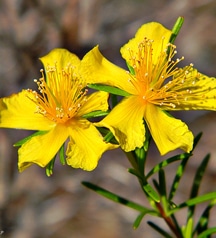
-
Body system affected: Skin.
-
Signs of toxicity: Dermatitis, skin sloughing in white-haired areas. This plant does not contain PAs and therefore does not affect the liver.
-
Toxic dose: Plant must be eaten over several days at doses similar to PA containing plants.
-
Toxic components: Mainly the leaves.
Yellow Star Thistle (Centaurea solstitialis)
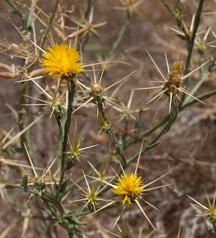
-
Body system affected: Nervous system.
-
Signs of toxicity: Difficulty eating/drinking, weight loss. Ability to swallow remains intact, but horses will have difficulty prehending food and chewing it. Horses usually die from starvation/dehydration. Horses can actually develop a preference for eating the plant and may eventually prefer it to hay
-
Toxic dose: Large quantities of about 600-1000 pounds eaten over several months.
-
Toxic components: Entire plant, fresh or dried.
Brackenfern (Pteridium aquilinum)
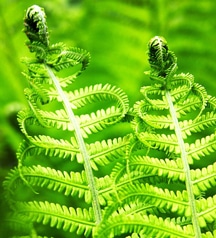
-
Body system affected: Nervous system.
-
Signs of toxicity: Toxin causes a deficiency in thiamine (vitamin B1) which manifests as abnormal mentation, behavioral changes, incoordination, teeth grinding, blindness, convulsions.
-
Toxic dose: Consumption of 3-5% of their diet in Brackenfern for at least 1 month.
-
Toxic components: Roots are the most toxic followed by the leaves, fresh or dried.
Poison Hemlock (Conium maculatum)
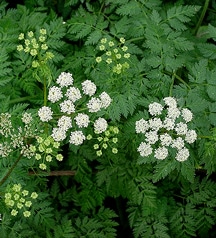
-
Body system affected: Nervous system.
-
Signs of toxicity: Start as early as 30-60 minutes after ingestion and include salivation, colic, incoordination, muscle tremors, respiratory distress and frequent urination and defecation. Death can occur from respiratory failure as soon as 2-3 hours after ingestion.
-
Toxic dose: 4-5 pounds of hemlock for a typical 1000 pound horse can be fatal.
-
Toxic components: Seeds are the most toxic followed by leaves and stems.
Oleander (Nerium oleander)
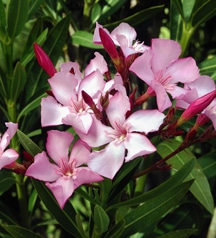
-
Body system affected: Gastrointestinal, Heart.
-
Signs of toxicity: Colic and diarrhea are common signs. Since Oleander is a cardiotoxic plant, arrhythmias almost always accompany GI signs. Thus other symptoms include irregular heart rate, anxiety, muscle trembling, collapse, death.
-
Toxic dose: 0.005% body weight (0.8oz per 1000 pound horse). Several leaves can be fatal!
-
Toxic components: Entire plant, fresh or dried.
Nightshade (Solanaceae)
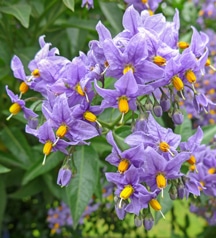
-
Body system affected: Nervous system, Gastrointestinal.
-
Signs of toxicity: Excitation followed by depression, incoordination, tremors, colic, manure retention or diarrhea. Plant is typically eaten when no other food is present.
-
Toxic dose: 0.1-0.3% of body weight (16-48oz per 1000 pound horse)
-
Toxic components: Entire plant, especially the berries.
Pigweed (Amaranthus reytroflexus)
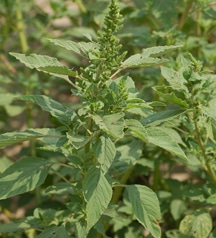
-
Body system affected: Kidney.
-
Signs of toxicity: Weight loss, lethargy, poor appetite, increased drinking and urination. May see trembling weakness, respiratory problems.
-
Toxic dose: Toxicity occurs after ingestion of a relatively large amount over several days. Plant is not palatable and most horses will avoid it if food is available.
-
Toxic components: Mainly the leaves, less in stems, roots, seeds.
Pacific Yew (Taxus brevifolia)
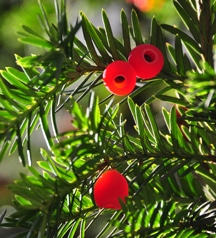
-
Body system affected: Heart.
-
Signs of toxicity: Slow heart rate, muscle trembling, anxiety, incoordination, colic, diarrhea, respiratory distress, acute death.
-
Toxic dose: 0.1-0.5% body weight (about 8-16oz of leaves) can be fatal! Yew poisoning in horses is not very common since they will usually not eat it as long as other food is present.
-
Toxic components: Entire plant, fresh or dry, except for the red fleshy area around the seed.
Johnsongrass/Sudan Grass (Sorghum family)
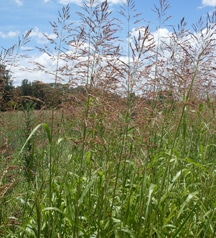
-
Body system affected: Cardiovascular, Neurologic, Urinary.
-
Signs of toxicity: Acute: From high levels of cyanide. Anxiety, trembling, respiratory distress, collapse, death. Signs can occur within minutes of ingestion.
-
Signs of toxicity: Chronic: From chronic ingestion of plants containing lower levels of cyanide. Hind end incoordination, weight loss, urinary incontinence, urine scald/hair loss down hind legs.
-
Toxic components: Leaves and stems, especially during regrowth after cutting.
Black Walnut (Juglans nigra)
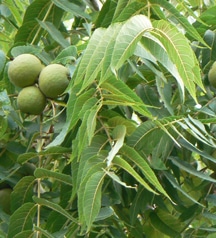
-
Body system affected: Musculoskeletal, Gastrointestinal.
-
Signs of toxicity: Laminitis, colic, depression, respiratory difficulties.
-
Toxic dose: Laminitis occurs when the plant is eaten or more commonly when wood shavings made of black walnut are used as bedding. Bodily contact with the shavings is enough to cause laminitis (ie the shavings don’t need to be eaten in order to cause disease). Laminitis can occur with bedding containing 20% or more of black walnut.
-
Toxic components: Bark, nuts, roots, pollen, wood shavings.
Oak (Quercus spp)

-
Body system affected: Gastrointestinal, Urinary.
-
Signs of toxicity: Lethargy, colic, firm feces or diarrhea, poor appetite, increased drinking, urination, red colored urine.
-
Toxic dose: Toxicity occurs when large amount are ingested. Note that some horses can ingest large quantities and not show signs of illness.
-
Toxic components: Leaf buds, flowers, acorns.
Treatment is largely the same for most toxic plants, except in the few cases where a specific treatment is available. Since horses are physiologically unable to vomit, a gastric tube must be passed into the stomach for gastric lavage. If caught early enough, activated charcoal can be administered via a nasogastric tube to absorb toxins. Given the limited treatments available for plant toxicosis, the majority of therapy is mainly focused on supportive and symptomatic care with the use of IV fluids, electrolytes, close monitoring and good nursing care.
If you suspect your horse has ingested a toxic plant you should obtain a sample of the plant, determine how much was eaten (if possible) and how long ago and call your veterinarian right away, even if clinical signs are not present. The ideal time frame to have your horse examined (for acutely toxic plants, such as Oleander) is within 30 minutes (maximum of 2 hours) so that your horse can be treated before too many toxins are absorbed by the bloodstream.
For a more complete listing of toxic plants consider the following resources:
Books:
-
A Guide to Plant Poisoning of Animals in North America. 2001. A. P. Knight and R. G. Walter
-
Poisonous Plants of California. Thomas C. Fuller and Elizabeth McClintock
-
Horse Owners Field Guide to Toxic Plants. Sandra M. Burger
Websites:
-
Canadian Poisonous Plant Information System http://www.cbif.gc.ca/pls/pp/poison?p_x=px
Reference:
-
1. A Guide to Plant Poisoning of Animals in North America. 2001. A. P. Knight and R. G. Walter. (The majority of the information in this article was acquired from this resource)

